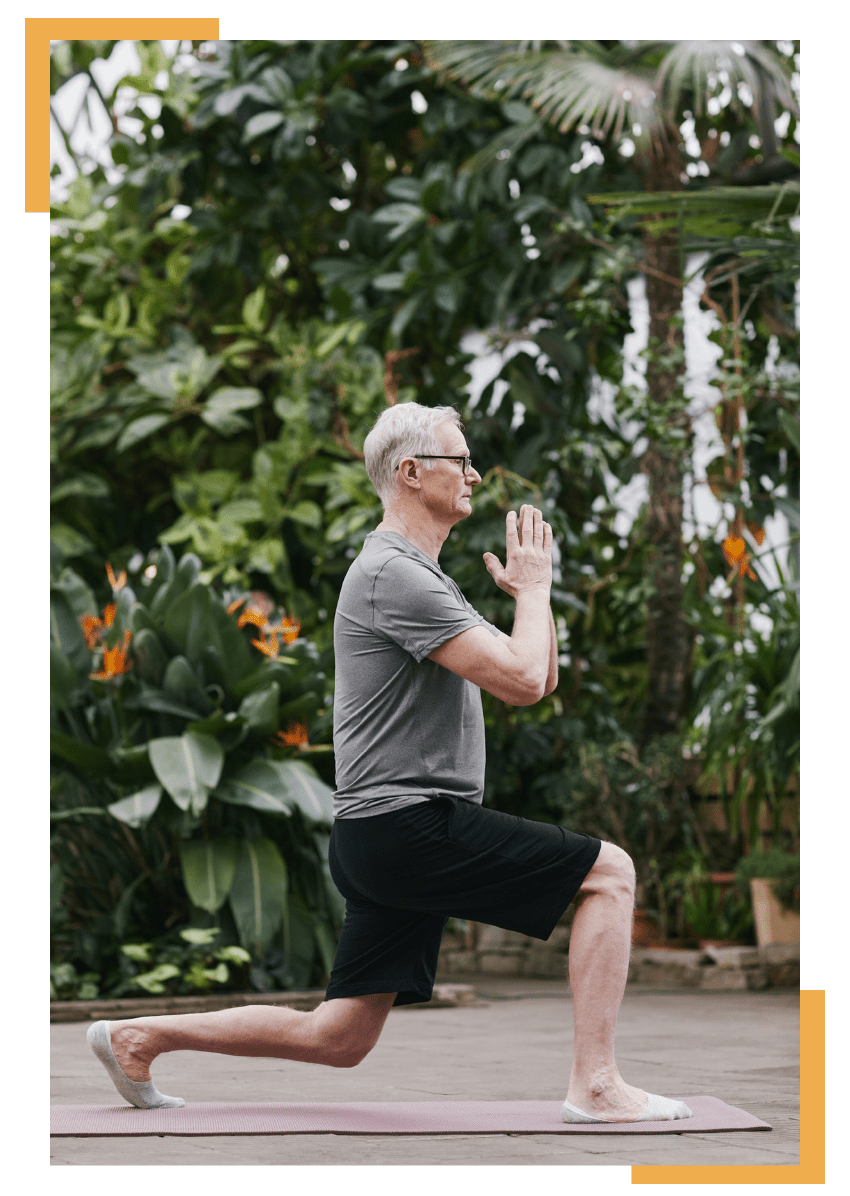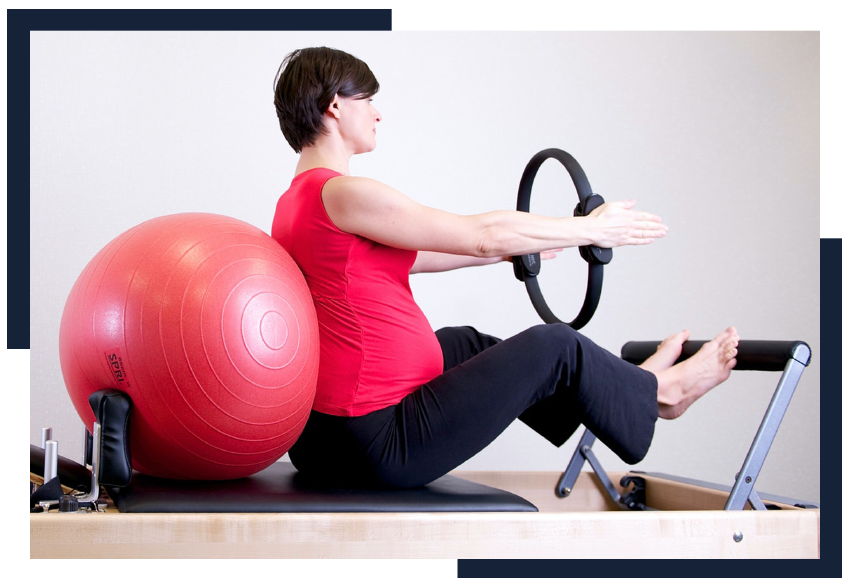Vestibular Rehabilitation Therapy
OneRehab is the best vestibular therapy center with customized services to meet your needs. Get in touch today and start the journey to a better and more independent life.

What is Vestibular Disorder?
It may come as no surprise that most people have never heard of the vestibular system. It is one of the systems that we rely on heavily, and many people often struggle with balance-related issues. The vestibular system refers to the internal part of the ear that is responsible for the balance. Therefore, a vestibular disorder is an infection, disorder, or condition that affects the inner ear and, consequently, balance.
OneRehab has the best team of physicians that provide custom-designed vestibular rehabilitation exercises.
The inner ear is responsible not only for facilitating hearing but also helps you maintain balance. It works alongside the eyes, and muscles keeping you steady on your feet. However, like any other body part, this part of the body can have issues. Injuries, infections, and other disorders can lead to vertigo or dizziness, which increases the risk of injuries and falls.
If such issues occur, you stand a chance of treating the condition through vestibular therapy. At OneRehab clinic, we create an individualized research-based treatment. Talk to us for the best care in the DFW area.


OneRehab Vestibular Therapy
Are you looking for vestibular therapy near me? Look no further than OneRehab multispecialty clinic. We have top specialists recognized for providing personalized care. During your visit, our physicians will conduct thorough assessments to determine the source of the problem. After that, we offer effective care to help restore quality of life. The vestibular therapy exercises that we choose help in providing comprehensive care.
Various vestibular disorders can cause anxiety, imbalance, depression, spatial disorientation, and many other effects. Our vestibular program helps treat different conditions causing imbalance.
How Do We Treat Vertigo?
The condition can become better over time without getting treated. However, where you or your loved one experiences severe, repeated episodes, you need to seek vestibular treatment.
Though one can take medicines to help at the early onset of the condition, vestibular rehab therapy is recommended. The most common treatment to help address this condition is VRT or vestibular rehabilitation training.
At the OneRehab vestibular therapy program, we provide our patients with the best care. Apart from taking them through the exercises, we also teach self-care routines, helping to prevent falls or injuries.
Vertigo
Though not a condition, vertigo is a symptom that is primarily associated with vestibular problems. It is a sensation that causes you to feel like you or everything around you is spinning or moving. It ranges from mild and barely noticeable to a severe sensation, making it impossible to maintain balance or do normal tasks. If you or a loved one have started experiencing this condition, you can visit our clinic for vestibular physiotherapy.
You can develop vertigo attacks suddenly, and they can last a few seconds or for a long. People with conditions can lose balance, feel or be sick, and become dizzy.
Schedule an appointment today
Do you have an issue with your inner ear, and it is affecting your balance? Contact our vestibular therapists today.

Vestibular Migraines
It is a problem affecting the nervous system. A vestibular migraine leads to repeated dizziness in patients who have previously suffered from migraine symptoms. It is contrary to other migraines in that you do not have a headache all the time. The condition is also known as migrainous vertigo, migraine-related vertigo, or migraine-related vestibulopathy.
If you or your loved one has this condition, you will notice dizziness lasting several minutes, problems with balance, vomiting or nausea, feeling sick from the head and eyes.
The condition also affects body movement, causes confusion, and sensitivity to sound. You can also feel unsteady, and you may not always have a headache.
Vestibular Migraines Treatment
Due to the nature of the problem, you can benefit from vestibular rehabilitation exercises. You need to choose a facility with well-qualified professionals to administer and guide you through this treatment. Our vestibular therapy clinic in Richardson is one such facility. Though conditions may be similar, people and patients are different. For this reason, we create personalized treatment by conducting a thorough medical examination.
Patients can also take medication to help with the migraine, vestibular stimulants to reduce dizziness, and other drugs to prevent severe episodes. All these drugs deal with symptoms. However, when you do vestibular neuritis exercises, you can help the brain relearn, allowing it to regain balance control. Thus, you minimize symptoms of dizziness in the case where there is damage in the balance organs.
Ideally, vestibular compensation treatment helps the brain deal with the confusing signals from the inner ear by helping it learn how to rely on alternative signals from the ankles, eyes, and neck, which helps maintain balance.
Vestibular Therapy Exercises
Are you wondering how to do vestibular therapy? Below are some of the exercises that patients can engage in. However, before attempting the exercises, you need to consult with a physical therapist to ensure they are safe for your condition.
Vestibular Compensation Therapy
As highlighted above, vestibular compensation helps the brain learn and regain the ability to control balance. It also reduces dizziness symptoms. This therapy model allows the brain to rely on other signals from the eyes, neck, legs, or ankles to maintain balance instead of the vestibular system.
Canalith Reposition Procedure (CRPs)
CRPs help people with benign paroxysmal positional vertigo or BPPV. BPPV is caused by otoconia or crystals that become displaced from the inner ear to the semicircular canals, the area tasked with sensing rotation. As these crystals move around within this area, they cause dizziness.
Vestibular therapy canalith repositioning entails a series of particular upper body and head movements aiming to move the crystals back in place. The common procedures are the Semont maneuver or the Epley maneuver. You need trained and skilled physicians to perform these exercises and prevent back and neck injury risk.
However, these exercises are not ideal for people with stiff necks. You can experience dizziness within the first 48 hours, but the symptoms reduce within a few weeks if it is successful. You can repeat the procedure if vertigo recurs.

Gaze Stabilization Exercises
PTs can also include gaze stabilization as part of vestibular physical therapy exercises. They help improve vision and the ability to concentrate on a stationary object as your head moves.
For this exercise, you need to focus on a letter held at eye level. Then, move your head side to side as you focus on that particular letter. You start slow with the head movement and increase the pace. It is good to maintain your focus on the letter as you move the head. When you feel dizzy, slow the pace.
As you become more comfortable, you need to adjust the length of time that you do the exercises. You can do them several days a week. Additionally, you can include up and down head movement. As you progress, you can keep the letter in a busy background and try to focus.
Cawthorne-Cooksey Exercises
After starting vestibular rehabilitation therapy for vertigo, your physical therapists can engage you in Cawthorne-Cooksey exercises. They involve round movement of eyes and head to exert control over them. It allows you to position yourself in the room that you are in.
The exercises can also involve hand-eye coordination, which helps you regain control and a sense of balance. You can do these exercises at home. It is advisable to start small and gradually increase their intensity as you attempt the exercises. They include:
- Eye movement: Your head needs to be still as you do these exercises. Then, move the eyes from side to side and up and down. Start slowly 10- 20 times and try to increase the speed.
- Sit to Stand: For this exercise, you need to stand from a sitting position. Keep your eyes open as you move, starting slowly and increasing the pace slowly. As you change the position, maintain a straight back and head level. You can try several times.
- Head Movement: For this exercise, keep your eyes open as you move the head up and down and side to side. Move slowly at the beginning and try to increase the speed as you get used to the movement.
- Shoulders shrug: From a sitting position, shrug your shoulders up and down several times.
- Touching your toes: if you have intense vertigo, start these exercises slowly and increase the speed as you become more comfortable. To do the exercise, bend and touch your toes, keep your eyes open, and let your head and body follow the gaze. Try this 5 to ten times.
These vestibular therapy exercises to do at home help relax your neck and shoulder muscles. It also trains the eyes to move independently, which increases coordination and promotes natural movement.
Brandt-Daroff Exercises
There are cases of BPPV that fail to respond to the canalith reposition procedure. In this case, Brandt-Daroff exercises can be the best option. You can perform these balance and vestibular rehabilitation therapy exercises at home without supervision. To perform the exercises:
- Sit on the edge of a bed or couch.
- Lie down on your left side as you turn your head to gaze up. Do these movements within 1 or 2 seconds. Then, keep your head at a 45-degree angle, looking up for 30 seconds.
- Sit straight for 30 seconds.
- Repeat the exercises on the right side.
- Repeat the exercises severally, about 5 times on each side.
- Then sit up. You can feel dizzy after the exercises, but you can wait for the feeling to pass before standing.
Get Vestibular Therapy Services Today
When you have issues with your balance, it affects many aspects of your life. Sadly, some of the injuries in the vestibular system can be permanent, affecting your balance. However, when you reach out to us, we introduce you to various vestibular therapy exercises, giving you a chance to improve your balance. Call us today and book an appointment.
Have a question? call us now
OneRehab
1761 International Pkwy Suite 135, Richardson, TX 75081, United States
Email Us
info@onerehab.com
Call Us
972 845 7875
Working Hours
M - F 7:00 AM – 7:00 PM
Sat 8:00 AM – 2:00 PM


